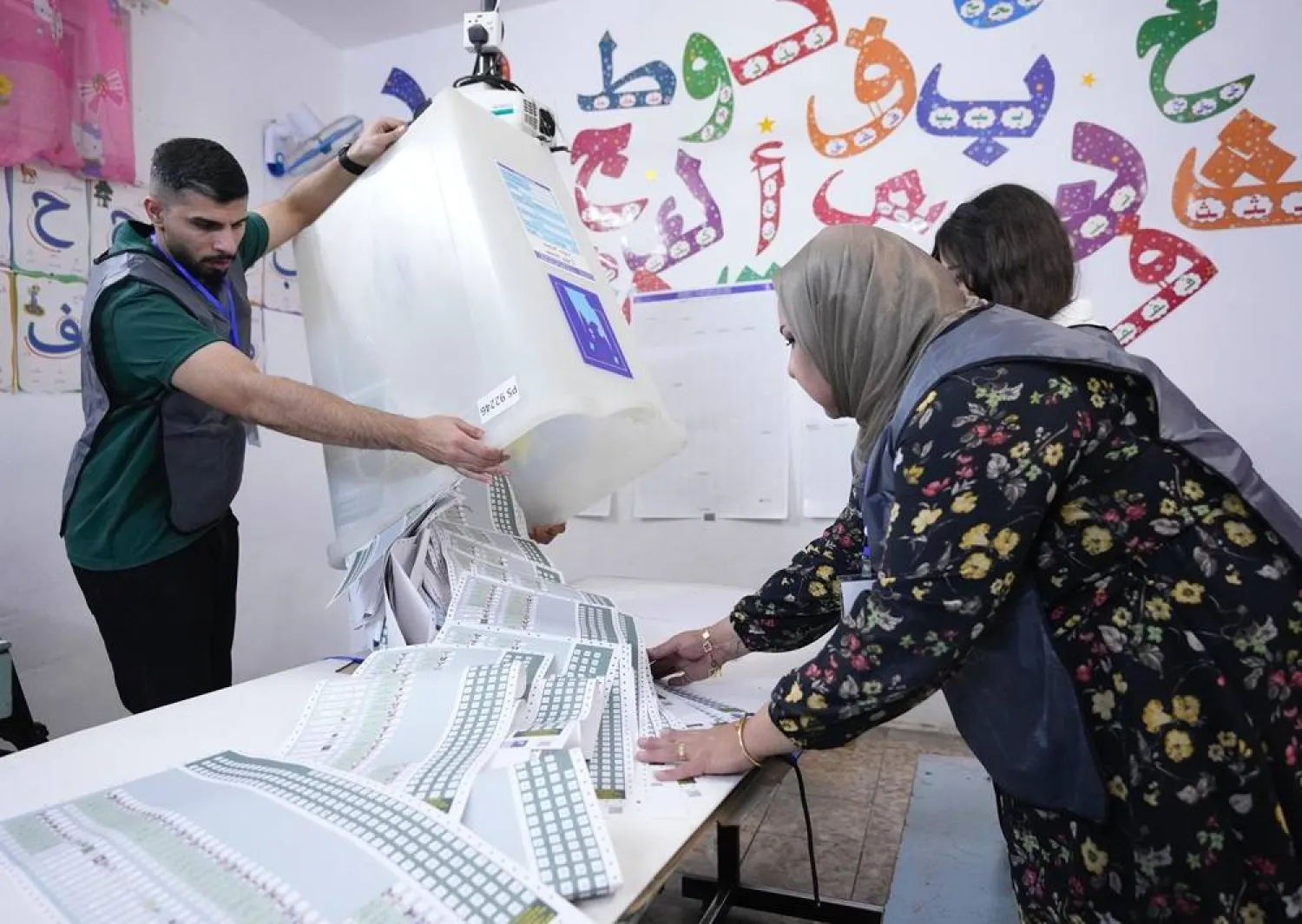More than two months after a fragile ceasefire between Israel and Hamas took effect in Gaza, the group has steadily reasserted some security control in areas under its authority. Yet for Gaza’s residents, daily economic hardship and deteriorating living conditions show little sign of easing.
Hamas’s popular base, made up of its members, their families, and supporters, remains a key pillar of its strength. Nearly two years of war with Israel have partially disrupted the group’s ability to consistently pay salaries.
During the war, Israel sought to dry up Hamas’s financial network by killing figures responsible for transferring money inside Gaza, as well as raiding currency exchange companies in the occupied West Bank that Israeli authorities said were linked to Palestinian factions.
According to field sources and Hamas officials who spoke to Asharq Al-Awsat, the group faced difficulties and delays in paying salaries regularly at leadership, field and other levels due to security conditions.
It has since resumed partial payments to all its members, including leaders and fighters from the Izz al-Din al-Qassam Brigades, Hamas’s armed wing, while paying lower rates to its preaching and social apparatus, described as civilian elements.
Where does Hamas get its money?
Sources agree that Hamas has managed to preserve some of its financial resources, including commercial activities inside and outside Gaza. One Hamas source said these business revenues generate income for the group alongside funds received from supporting parties such as Iran and others.
They added that such external support fluctuates, sometimes declining, increasing or arriving with delays for reasons related to the donors.
The source said Hamas faces growing difficulties in transferring funds into Gaza, forcing those overseeing salary payments to rely on whatever cash remains accessible in their reserves or to collect revenues from their own commercial sources.
How are salaries paid?
Sources who receive some of these payments told Asharq Al-Awsat, on condition of anonymity, that salaries and stipends were sometimes paid regularly each month but were also delayed by periods ranging from six weeks to two months.
A Hamas source said salary rates varied and did not exceed 80 percent at best, particularly for leaders and operatives in the Qassam Brigades and at the political level.
Lower percentages were paid to the preaching and social apparatus and other bodies, alongside allocations for activities aimed at supporting the population and what the group calls its popular base.
The source said the lowest rates were paid to government employees at both civilian and military levels, reaching 60 percent at most before declining in recent months to around 35 percent.
Several sources said Hamas continues to pay stipends to the families of its members and leaders killed over decades of its activities, as well as to prisoners and wounded fighters.
They added that the group also supports families whose salaries were cut by the Palestinian Authority, continues to provide social assistance and allocates funds to projects aimed at supporting its popular base, including food aid, water provision and communal kitchens, in coordination with foreign institutions.
Asked how salaries are delivered, Hamas sources said payments are made through tight networks and by hand to avoid Israeli monitoring of electronic wallets and banks.
Worn banknotes and tobacco taxes
As Hamas relies on manual delivery, questions remain over how it secures cash under Israel’s blockade. A Hamas source said the process was complex and could not be disclosed for security reasons.
Local sources outside Hamas said the group depends heavily on traders to obtain cash, alongside its existing cash reserves and revenues from businesses it operates.
One source said Hamas often pays worn banknotes to government employees in particular, and to a lesser extent to Qassam fighters and political figures. This forces recipients to manage on their own as most traders refuse to accept damaged or worn currency.
Hamas has encouraged some small traders, especially fruit and vegetable sellers, to accept such notes in exchange for continued support and access to goods at lower prices.
Another source said Hamas has imposed taxes on certain goods, such as tobacco products, to raise funds, noting that most cigarette traders deal in cash rather than electronic wallets, which many Gaza residents now rely on.
Israeli accusations against Iran
On Dec. 7, Israel accused Iran of supporting what it described as a banking network transferring hundreds of thousands of dollars to Hamas. Israel said the network consisted of Gaza-based money changers residing in Türkiye who exploit the country’s financial infrastructure for what it called terrorist purposes.
According to Israel, the network operated in full cooperation with the Iranian regime, transferring funds to Hamas and its leaders and managing wide ranging economic activity involving receiving money from Iran, storing it and transferring it to Hamas via Türkiye.
Israel published the identities of three individuals, including an official in Hamas’s financial apparatus and two money changers from Gaza, claiming they worked under the direction of Khalil al-Hayya.
Sources familiar with the two men told Asharq Al-Awsat they have lived outside Gaza for many years.
One was known to work with various Palestinian factions and had previously smuggled funds for them, including through tunnels along the Egyptian border, while also operating as a businessman in multiple fields beyond currency exchange.
Hamas sources dismissed the accusations as baseless, saying the group has its own methods for transferring funds.
They said Hamas often faces difficulties moving money from abroad into Gaza, a problem that also affects the West Bank due to Israeli pursuit and Palestinian Authority security pressure, though conditions there are better than in Gaza for transferring funds.
Sources from other Palestinian factions said they are also suffering financial crises and difficulties paying salaries and stipends to their members and leaders.
They said they sometimes distribute food aid and other assistance to help their members and families cope with harsh economic conditions, with most of the support coming through institutions backed by Iran or other parties.









